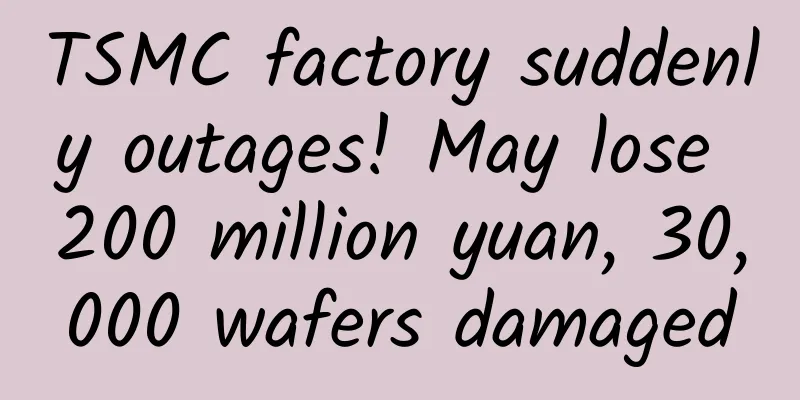Breaking news! 5G standard postponed for 3 months

|
According to reliable intelligence, at the 3GPP meeting held in Italy two days ago, 3GPP dropped a bombshell: the R15 Late Drop freeze time was postponed by 3 months. The postponement of this plan may affect the subsequent R16 version freezing time, and may also lead to a delay in the launch of subsequent 5G services. 3GPP originally planned to freeze the R15 Late Drop version in December 2018 and complete the standard version containing complete ASN.1 code in March 2019. However, this meeting decided to postpone the freezing time of the R15 Late Drop version to March 2019 and the completion time of ASN.1 to June 2019. R15 is the first phase of 5G standard, and R16 is the second phase of 5G standard. The postponement may affect the subsequent R16 version freezing time. R16 was originally scheduled to be frozen in December 2019, but after the revised schedule, R16 is estimated to be postponed to March 2020, and the ASN.1 freeze will be completed in June 2020. What is going on here? As we all know, in December 2017, 3GPP completed the R15 NR NSA (non-standalone networking) standard; on June 14, 2018, on the eve of the World Cup, 3GPP released the R15 NR SA (standalone networking) standard. However, in fact, the 3GPP R15 standard is not completely finalized. Because R15 has three versions: R15 NR NSA, R15 NR SA and R15 late drop. That's right, a Release has three versions, which has never happened before. This is probably because 3GPP accelerated the pace of standard setting in 2017, bringing forward the completion of the 5G NR NSA standard, which was originally planned to be completed in June 2018, to December 2017 to meet the first-mover needs of some operators. Therefore, the first phase of 5G standard R15 was divided into three versions for phased implementation. After completing the R15 NR NSA version in December 2017 and the R15 NR SA version in June 2018, there was actually one R15 late drop left to be completed. So, what is the difference between R15 NR NSA, R15 NR SA and R15 late drop? What does the remaining R15 late drop include? This starts with the 5G deployment options. When evolving from 3G to 4G, we call it "overall evolution", that is, the wireless access network and core network are packaged as a whole and evolved from 3G to 4G. But in the 5G era, things are different. When 4G evolves to 5G, the radio access network and the core network are separated, and the 5G radio access network (NR), 5G core network, 4G core network and 4G radio access network (LTE) are mixed and matched to form an evolutionary route with multiple network deployment options. These options mainly include (as shown below):
As can be seen from the table above, the so-called non-independent networking is the dual connection of LTE and NR new radio. Due to the differences in specific implementation, it includes three architectures: EN-DC (option 3), NE-DC (option 4) and NGEN-DC (option 7) architectures. DC stands for Dual Connectivity; E stands for E-UTRA, which is 4G wireless access network; N stands for NR, which is 5G new wireless; NG stands for next-generation core network, which is 5G core network. EN-DC refers to the dual connection between 4G wireless access network and 5G NR, NE-DC refers to the dual connection between 5G NR and 4G wireless access network, and NGEN-DC refers to the dual connection between 4G wireless access network and 5G NR under the 5G core network. The R15 NR NSA (non-standalone networking) standard completed by 3GPP in December 2017 is option 3. The R15 NR SA (standalone networking) standard completed on June 14 is option 2. As for the remaining options 4 and 7, they will be completed in the R15 late drop version. The original planned completion time was December 2018, but this time 3GPP postponed the completion time to March 2019. The R15 late drop mainly includes the following architectures: Option 4 (NE-DC architecture) and Option 7 (NGEN-DC architecture), as well as NR-NR dual connection (synchronous case). What is NR-NR dual connection? Some operators plan to use low-frequency bands (such as 700/800/900MHz bands) to build the coverage layer of 5G networks, and then use high-frequency bands (such as millimeter wave bands) to supplement network capacity. However, due to the huge difference in wireless propagation characteristics between low and high frequency bands, it is not practical to implement carrier aggregation technology through co-station. Therefore, NR-NR dual connection technology is proposed. Why is 3GPP delaying 5G standards? It is said that this is to reserve more time to ensure full coordination among various 3GPP working groups, and to ensure better compatibility between the network and terminals and chips. Most representatives expressed support for the postponement of the standard completion date. In the early stage, due to the accelerated standard formulation, the RAN working group worked late into the night to catch up with the progress, often unable to rest after 10 pm, which was really tiring. |
<<: How to view the doomed failure of 5G network from a metaphysical perspective
Recommend
Major challenges and development trends of data center network technology in Internet projects
The network is the most stable part of the data c...
10g.biz Hong Kong CN2 VPS simple test
A group friend asked about the information about ...
Huawei joins hands with Southwest Guizhou to use cloud to give this land a better future
[51CTO.com original article] Xiao Wang is an ordi...
Linkerd 2.10 (Step by Step) (I) Adding your service to Linkerd
[[405467]] In order for your services to take adv...
ZJI: Hong Kong server special offer from 450 yuan/month-E5-2630L/16G memory/480G SSD/10M bandwidth/three-network direct connection
ZJI is currently offering a special promotion for...
What is network latency? How can I minimize it?
Network latency is not a new term. In modern Ethe...
Four Key Words for Successful Large-Scale Deployment of IPv6
【51CTO.com original article】In 2019, IPv6 transfo...
Potential application scenarios of 6G in the future
Although 6G is not yet a viable technology, it wi...
A Brief Discussion on WebSocket Protocol-RFC 6455
Labs Guide Before the emergence of WebSocket, the...
Analyst: Open source is more likely to solve problems in the telecommunications industry
A senior consultant in the telecommunications ind...
Inner Mongolia promotes "Internet +" and explores government cloud construction
[[188588]] The intensive construction of "In...
How businesses can prepare for 5G
[[355718]] While people may think of 5G as a cool...
CUBECLOUD: Los Angeles/Hong Kong Lite series 30% off from 27 yuan/month, Pro series 15% off from 58 yuan/month
CUBECLOUD is a Chinese hosting company establishe...
A graphic guide to selecting network equipment
Hello everyone, I am Xiao Fu. Illustrated network...
eSIM is making a big splash in the IoT space, but it’s not yet seen on mobile phones
Recently, Beijing Mobile officially launched the ...
![[11.11] Summary information: VPS-BID/Journey Cloud/Smart Trade Cloud/A400/Themebetter](/upload/images/67cac24be53ad.webp)








